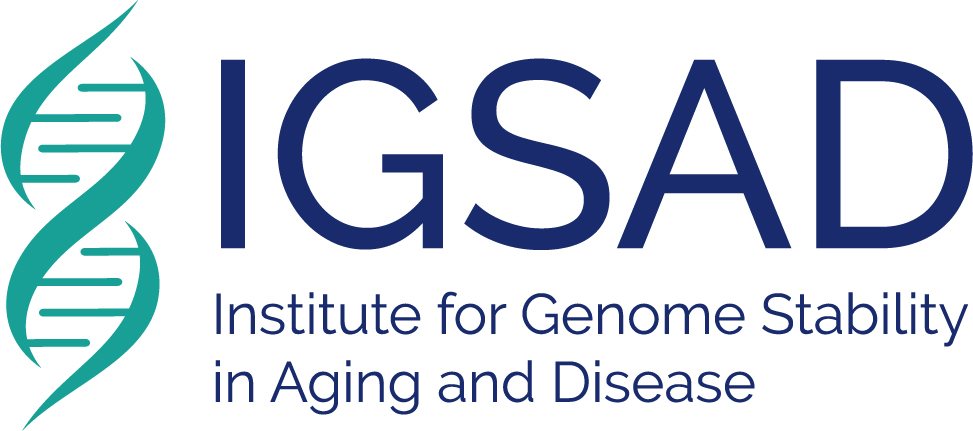 The genome contains all information for building and functionally maintaining the cell. In contrast to any other macromolecule the genome cannot be replaced but instead requires constant repair amid tens of thousands of DNA damaging events that occur daily in a human cell. The consequences of DNA damage range from genetic aberrations such as mutations that can alter gene function to persistent lesions that can interfere with transcription and replication that can functionally impair the cell. Given the central role that the genome has for any biological process, the DNA damage response is a multi-factorial process that impinges on a plethora of homeostatic mechanisms.
The genome contains all information for building and functionally maintaining the cell. In contrast to any other macromolecule the genome cannot be replaced but instead requires constant repair amid tens of thousands of DNA damaging events that occur daily in a human cell. The consequences of DNA damage range from genetic aberrations such as mutations that can alter gene function to persistent lesions that can interfere with transcription and replication that can functionally impair the cell. Given the central role that the genome has for any biological process, the DNA damage response is a multi-factorial process that impinges on a plethora of homeostatic mechanisms.
The Schumacher-Lab aims to understand the DNA repair and DNA damage response mechanisms in the context of living organisms. In humans, DNA repair deficiencies can give rise to developmental defects, premature ageing, and cancer susceptibility. The pathologies observed in those congenital syndromes are highly complex. Therefore, we developed the nematode C. elegans as experimental model to shed light on the highly conserved DNA repair mechanisms and the consequences of DNA damage on the organism. C. elegans is particularly relevant for investigating the mechanisms of genome maintenance in germ cells that perpetuate the genetic information indefinitely throughout the generations. In contrast, the somatic tissues of the worm allow the identification of genome stability mechanisms in terminally differentiated cell types, such as neurons, that cannot be replaced but instead require lifelong maintenance and repair. Here, we are addressing who homeostatic mechanisms could maintain somatic functioning amid the onslaught of DNA damage throughout a lifespan. The germline and the soma are intricately communicating and influence each other’s maintenance mechanisms. We are studying how impaired genome stability influences reproductive lifespan via stress response mechanisms in the soma and, vice versa, how the soma surveils the environment and regulates the genome quality control in the germ cells. Given the highly conserved DNA damage responses in the nematode we are using mammalian disease models and human cell culture to address their functional involvement in genome stability control in disease mechanisms. We are employing a wide variety of state-of-the-art approaches ranging from genetics and epigenetics, cell biology and biochemistry to transcriptomics and proteomics. In our lab, graduate and post-graduate biology, biochemistry, bioinformatics, and medical students work together with postdoc from diverse backgrounds to address the pertinent questions of the biology of ageing and age-related diseases.

